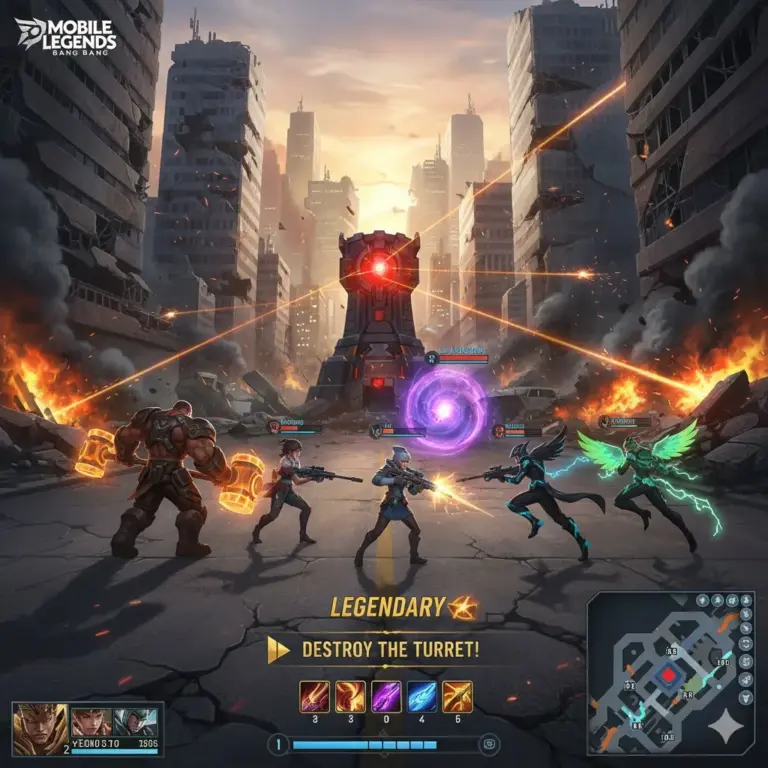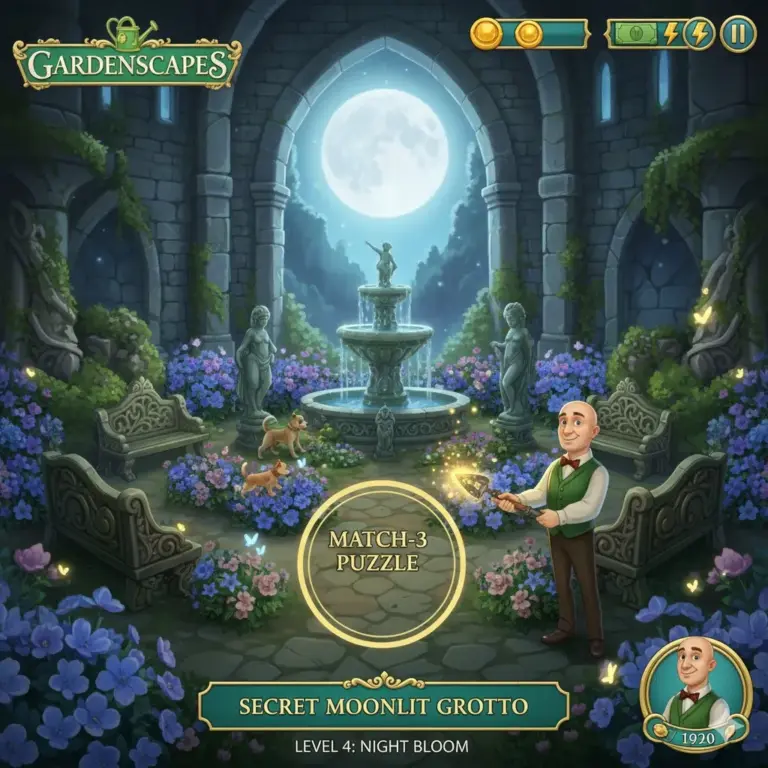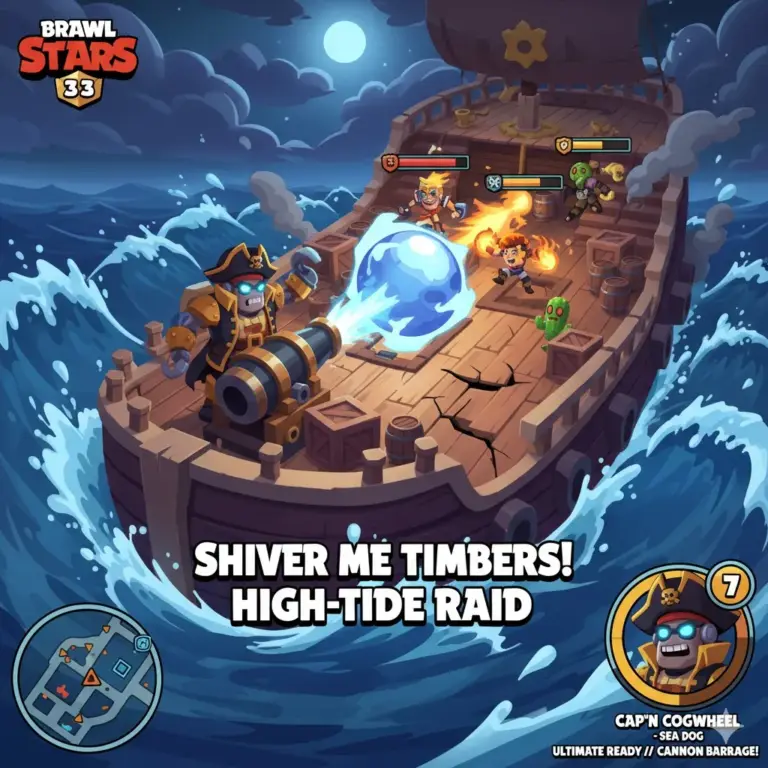Royal Match Review 2025: The King of All Puzzle Games… Or a Gilded Cage?
In the hyper-competitive world of mobile gaming, one genre has reigned supreme for over a decade: the match-3 puzzle. For years, the throne was held by Candy Crush Saga, a name synonymous with casual gaming. But in recent years, a new challenger has not only laid siege to the castle but taken the crown. That challenger is Royal Match.
Developed by Dream Games, this title has exploded in popularity, consistently ranking as one of the highest-grossing mobile games in the world, regularly surpassing its legendary predecessors. In 2025, it’s not just a game; it is the game for millions of players.
Its marketing is legendary, built on a simple, powerful promise: “No Ads.” In a world where free-to-play (F2P) games are notorious for bombarding players with obnoxious, unskippable 30-second videos, this promise alone was a revolution.
But how does a game with no forced ads make billions of dollars? And is the gameplay compelling enough to justify its monolithic success? This in-depth 2025 review will break down the polished puzzle mechanics, the brilliant psychological design, and the flawless monetization engine that makes Royal Match the undisputed, and perhaps dangerous, king of the puzzle genre.
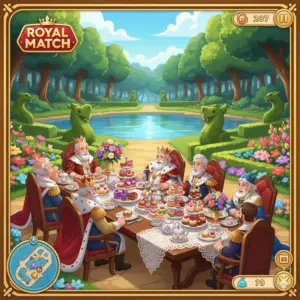
What Is Royal Match? The “Help the King” Deception
If you’ve seen the ads, you’ve seen King Robert. He’s a bumbling, endearing monarch constantly finding himself in absurdly specific peril—trapped by lava, about to be crushed by a statue, or shivering in a frozen room. The ad implores you to “pull the pin” or “choose the right tool” to save him.
Here’s the first and most important thing to know about Royal Match: That is not the game.
Like Homescapes and Gardenscapes before it, Royal Match employed the “false advertising” trope to great effect, showing mini-games that were, at best, a tiny, occasional bonus feature. However, unlike its predecessors, Royal Match has one crucial difference: it doesn’t force you to do anything but play the core puzzle game.
There is no mandatory, resource-draining story. You don’t have to spend your hard-earned “Stars” to build a garden, renovate a room, or choose a new carpet. The “story” is merely a framing device. You beat a level, and King Robert’s area is automatically built and decorated. You are an interior decorator funded by puzzle-solving, but your job is blessedly simple: just solve the puzzles.
This single design choice—focusing 100% on the core gameplay loop—is Royal Match’s first stroke of genius. It respects the player’s time and intent. You downloaded a puzzle game, and that is exactly what you get to play, back-to-back, without interruption.

The Core Gameplay Loop: A Masterclass in Refinement
At its heart, Royal Match is a “tap-to-blast” match-3 game, more akin to Toon Blast than Candy Crush. You don’t swap adjacent items; you tap on clusters of three or more matching-colored blocks to clear them.
The goal of each level is simple: complete the on-screen objectives within a limited number of moves. This might be “collect 30 green blocks,” “break all the wooden crates,” or “drop the magic wands to the bottom.”
Where the game’s depth emerges is in its power-ups, which are created by matching larger clusters:
- Rocket: Match 5. Clears a full row or column.
- TNT Barrel: Match 7. Clears a 3×3 circular area.
- Propeller: Match 9. Clears four random, high-priority blocks on the board (e.g., objective-related items).
- Light Ball (Disco Ball): Match 11. Clears all blocks of a single, matching color from the board.
The true magic happens when you combine these power-ups. Tapping a TNT next to a Rocket launches the Rocket and then explodes, clearing a massive 3-row or 3-column swath. Combining a Light Ball with any other power-up fills the entire board with that power-up and unleashes them all. A Light Ball + Propeller combo, for instance, is a screen-clearing spectacle of targeted destruction.
The animations are buttery smooth. The sound design is crisp, tactile, and immensely satisfying. The simple act of clearing blocks, building power-ups, and unleashing combos is engineered to put your brain in a “flow state.” It’s fast, responsive, and feels fantastic to play.
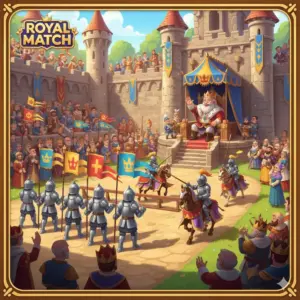
The “No Ads” Promise: The Billion-Dollar Hook
Let’s be clear: the “No Ads” marketing is true. You can play Royal Match for hundreds, even thousands, of levels and never be forced to watch a single video ad from another company.
This decision is the cornerstone of its success. In the 2025 mobile landscape, players are utterly fatigued by ad-spam. F2P games have become a digital hellscape of 30-second timers for worthless rewards. Royal Match disrupted this model by offering a premium, uninterrupted experience for free.
This does two things:
- Builds Incredible Goodwill: Players feel respected. They are “guests,” not “products” to be sold to advertisers. This makes them far more likely to stick with the game and feel positively about the brand.
- Creates a Captive Audience for IAPs: By removing the “watch an ad for a reward” option, Dream Games funnels all player desire for progression, power-ups, or extra lives toward a single solution: in-app purchases (IAPs).
The “No Ads” policy isn’t an act of charity; it’s the most sophisticated and effective monetization funnel ever designed for a casual game.

The Real Game: Social Obligation and Endless Events
If you play Royal Match solo, you’re only experiencing half the game. The true “meta-game,” the one that drives long-term retention and spending, is the endless cycle of events and team-based competition.
1. Teams: The Social Glue
You are quickly encouraged to join a “Team” of 50 players. This is the social hub. You can chat, request “lives” from teammates, and, most importantly, participate in team events.
- Team Chest: Every few days, a chest appears. To open it, the team must collectively beat a certain number of levels. Every 20 levels you personally beat, you get to “help” your team by adding 1-3 “crowns” to the chest. This creates a powerful sense of social obligation. You don’t want to be the “slacker” who didn’t contribute.
- Team Battle: Your team is pitted against another team in a race to collect the most power-ups. The winning team gets a massive prize. This fosters collaboration and, again, an obligation to pull your weight.

2. Events and Tournaments: The Dopamine Treadmill
The game is a non-stop barrage of overlapping events, ensuring there is always a new, shiny goal to chase.
- King’s Cup: A personal event where you must beat a series of levels in a row without failing. The rewards get progressively larger, but failing once sends you back to the start. This creates incredible tension and is a primary driver for spending coins to get extra moves.
- Royal League / Tournaments: This is the game’s “Player vs. Player” mode. You are placed in a leaderboard of 100 players. You earn “trophies” for every level you beat. Finishing in the top 10 moves you up a league and grants you a huge reward. This directly incentivizes “binge-playing” and spending to out-compete others.
- Bonus “Mini-Games”: To break up the monotony, the game includes the very “pin-pulling” puzzles from its ads, as well as bonus “lava-climbing” or “propeller-flying” levels where you have infinite moves for a short time.
The “real” loop of Royal Match isn’t just “beat levels.” It’s “beat levels to win the tournament, to help your team, to complete the King’s Cup.” The puzzles are just the engine; the events are the racetrack.

The Dark Side of the Crown: The “Pay-to-Win” Wall
So, how does it make billions?
Royal Match is free-to-play, but it is one of the most perfectly-tuned “pay-to-continue” and “pay-to-win” games ever made.
The monetization is built entirely on frustration. The level design is a masterwork of psychological manipulation. You will cruise through 10-15 “easy” levels, feeling like a genius. Your confidence soars. Then, you hit a “Hard” or “Super Hard” level.
These levels are often mathematically brutal. They are designed to be almost impossible to beat without a perfect combination of luck and boosters. You will fail. You will fail again. You will burn through your five free lives (which regenerate on a timer).
And just as you fail, with one single jelly left on the board, a pop-up appears: “Want 5 extra moves? Only 900 Coins!”
This is the moment. The game has created a pain point—frustration, a sunk-cost-fallacy (“I’ve already spent 5 lives on this!”)—and then sells you the perfect cure. You don’t want to wait 30 minutes for a new life. You’re so close. So you pay.
You buy a “King’s Offer” bundle for $4.99, get a pile of coins and some boosters, and use them to blast past the level. The relief is immense. The game has successfully converted your frustration into revenue.
This is not a predatory system in the same way as forced ads. The player is always in control. But it’s a system designed to manufacture frustration and then sell the solution. In tournaments, this becomes pay-to-win. The players at the top of the leaderboards are not the most “skilled”; they are the ones with the deepest pockets, buying endless lives and pre-game boosters to grind out hundreds of levels in a single sitting.
2025 Verdict: Is Royal Match Worth Your Time?
Royal Match is a paradox. It is simultaneously one of the most player-friendly and one of the most psychologically manipulative games on the market.
It’s player-friendly because it delivers on its “No Ads” promise. The core puzzle gameplay is polished to a mirror shine. It’s fast, fun, and deeply satisfying. For a player with high self-control who just wants to play a few puzzles on the bus, it’s a perfect experience.
It’s manipulative because its entire meta-game—the teams, the tournaments, the “Super Hard” levels—is a flawless machine built to generate frustration and exploit the “sunk cost” fallacy, funneling players toward its store.
It has become the “King of Puzzle Games” not just by being a good game, but by being a perfect product. It respects the player’s tolerance for ads while mercilessly targeting their tolerance for frustration.
You should play Royal Match if:
- You despise forced video ads in mobile games.
- You love pure, high-quality, “tap-to-blast” puzzle mechanics.
- You enjoy light social competition and collaborative team goals.
- You have strong self-control and can resist “pay-to-continue” prompts.
You should AVOID Royal Match if:
- You are prone to “completionist” or “gacha” spending habits.
- You get easily frustrated by luck-based (RNG) difficulty spikes.
- You are looking for a game with a deep story, characters, or strategic depth.
- You believe “pay-to-win” ruins a competitive experience.
Royal Match is the peak of the casual mobile genre. It’s a beautiful, polished, and endlessly playable slot machine disguised as a puzzle game. It’s a fantastic time-waster, but be warned: the king’s generosity always comes at a price.
Final Score:
- Gameplay: 4.5/5 (Incredibly polished, addictive, and satisfying for its genre)
- Graphics & Sound: 5/5 (Buttery smooth, colorful, and tactile)
- Engagement & Longevity: 5/5 (A flawless machine of events and social hooks)
- Monetization: 2/5 (No forced ads, but aggressively pay-to-win/continue)
